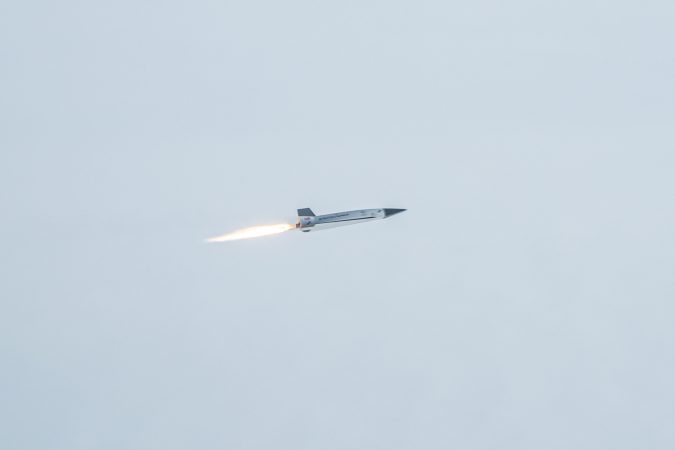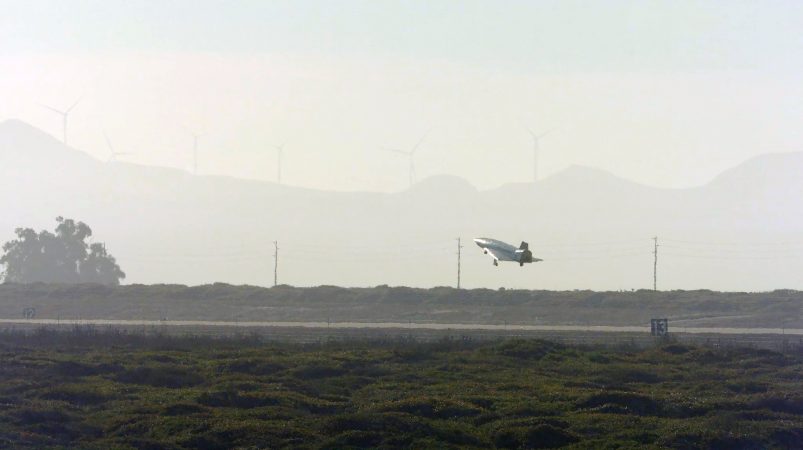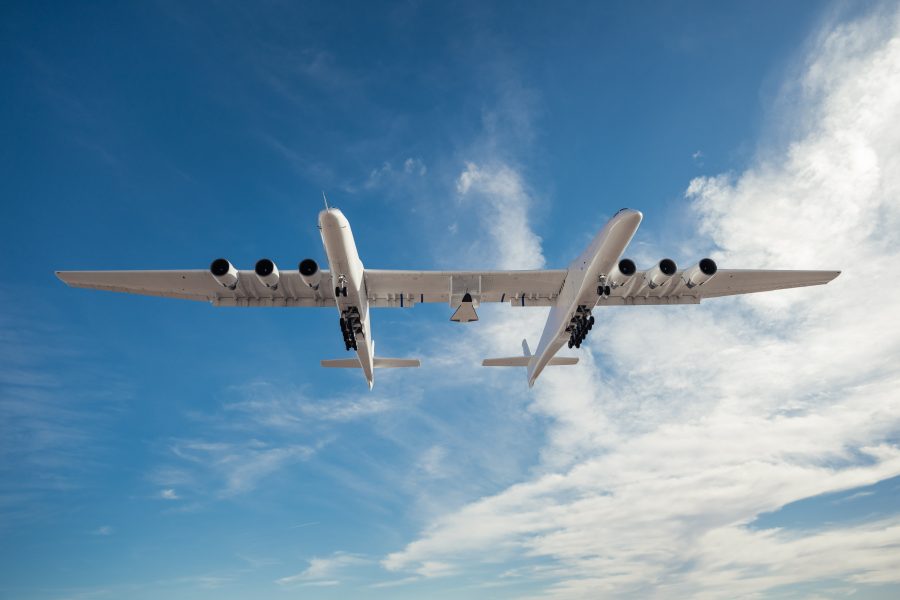The Talon-A2 uncrewed hypersonic test vehicle made a second flight just three months after its first, demonstrating reusability and paving the way for a faster pace of hypersonic testing, the Pentagon announced May 5.
The boost-glide vehicle, built by Stratolaunch, and lifted to launch altitude by the Stratolaunch Roc six-engined, double-fuselage carrier aircraft, flew on an undisclosed day in March, the Pentagon said in a release. After flying over the Pacific Ocean and achieving hypersonic speeds—defined as in excess of Mach 5—the vehicle landed on a runway at Vandenberg Space Force Base, Calif. The same vehicle flew a similar profile in December 2024. In recent years, uncrewed hypersonic test vehicles craft have splashed down into the ocean after exhausting their fuel.
Stratolaunch is providing hypersonic test vehicles and services to Leidos, the prime contractor for the effort.
The flight was part of the Multi-service Advanced Capability Hypersonic Test Bed program, or MACH-TB, being conducted by the Defense Department’s Test Resource Management Center.
“This test campaign marks the nation’s first return to reusable hypersonic flight testing since the manned X-15 program ended in 1968,” the Pentagon release stated. The MACH-TB effort “accelerates delivery of advanced hypersonic capabilities to the warfighter by providing DOD, other Federal agencies, industry, and academia the capability to affordably and rapidly conduct hypersonic experiments and test hypersonic system components.”

The program seeks to provide a high tempo of hypersonic flights at low cost, in order to test components such as materials, communications, propulsion, and other elements of hypersonic craft. It’s intended to facilitate the transition from ground testing to full-scale flight tests and uses a modular approach.
Stratolaunch said the vehicle “surpassed Mach 5 during its trajectory for the second time, exceeding the previous speed record set with the December flight.”
TRMC director George Rumford said in a statement that “demonstrating the reuse of fully recoverable hypersonic test vehicles is an important milestone for MACH-TB. Lessons learned from this test campaign will help us reduce vehicle turnaround time from months down to weeks.” The Pentagon did not say when it plans to fly the vehicle again.
“The success of this launch marks an important milestone for our hypersonic testing services,” said Larry Barisciano, Leidos’ aerospace systems lead.
“The program’s goal is to consistently and rapidly test various payloads to help the government assess technical readiness levels of advanced hypersonic capabilities. This launch serves as a testament to the speed in which Leidos could pull the program together, highlighting the agility Leidos provides for customers.”
Stratolaunch president and CEO Zachary Krevor said that “with the data collected from this second flight, we are able to apply lessons learned to enhance the strength and performance of the Talon-A vehicles. While the team needs to complete its data review of flight two, the first flight review confirmed the robustness of the Talon A design while demonstrating the ability to meet the full range of performance capabilities desired by our customers.”
Mark Lewis, president and CEO of the Purdue Applied Research Institute, advisor to Stratolaunch, and former deputy undersecretary of for research and engineering, hailed the importance of reusability in reducing the cost of testing.
“Because it’s a winged cruiser/glider, Talon also flies an envelope that’s more useful for categories of hypersonic vehicles versus sounding rockets,” Lewis said. Being able to recover a hypersonic vehicle is “extremely powerful,” he added.
In previous hypersonic programs, “we had flight tests with results that we’re still uncertain about. If we could have looked at the articles after flight, it would have been far more revealing. And of course, the ability to re-fly something is also powerful.”
Leidos was awarded the MACH-TB contract by Naval Systems Warfare Center Crane on behalf of TRMC, the Pentagon said. Kratos will perform systems engineering, integration, and testing on MACH-TB 2.0, under a January contract valued at $1.45 billion.
The TRMC is a Pentagon Field Activity under the undersecretary of Defense for research and engineering.



